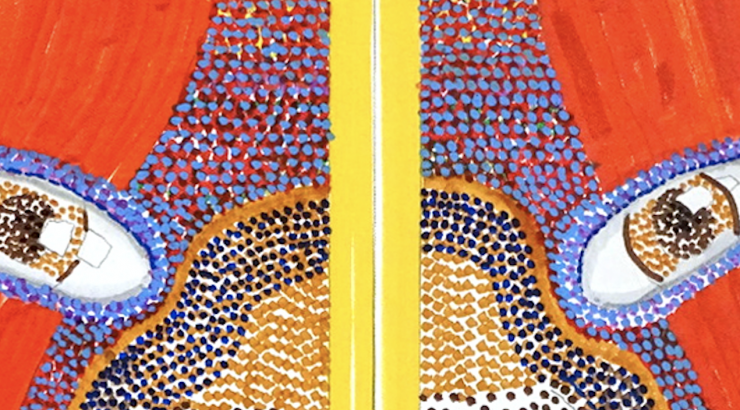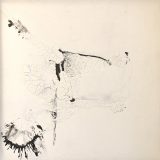Peter Williams The Art of Bearing Witness
April 19, 2021
For more than 45 years, Peter Williams has created artwork that chronicles current and historical events and captures the diverse experiences of Black Americans. In contrast to the dark, violent realities that Williams’s work explores (such as racial oppression, police brutality, slavery, and mass incarceration), his work is vibrantly colorful and humorous. Intertwining personal memories, fictional characters, and historical details, Williams’s artwork retells American history from a fresh, comic perspective. His works force us to consider the absurdity of the myths at the core of American society.
Peter Williams was born in Nyack, NY, in 1952 and lives in Wilmington, Delaware. He is the recipient of a 2021 Guggenheim Fellowship Award, 2021 American Academy of Arts and Letters Purchase Prize, and the 2020 Artists’ Legacy Foundation Artist Award. In 2018 he was inducted into the National Academy of Design. He recently retired from his position as Senior Professor, Fine Arts Department, University of Delaware. He taught at Wayne State University for 17 years.

Peter Williams, Geegee (He had red Hair), oil-based enamel and graphite on canvas, 2019. Purchased with funds from the Ellingson Family
Geegee (He had red Hair) was recently exhibited in Peter Williams: Black Universe at Luis de Jesus Gallery in Los Angeles. The gallery described this exhibition as “an Afrofuturist tale of a brown-skinned race that escapes to outer space in search of new planet homes and an end to the cycles of oppression from which they have been subjected.” This exhibition captures “a journey of consciousness and conscience,” the travels that all of us must take to face the truth about race and ourselves. The space travelers in these paintings use their bodies and minds to visit ancestral lands and spirits to better understand the present. In an interview, Williams explains the visual inspiration for these artworks: “It started out with my decision to leave the planet and the way to do that would be to take my 12-year-old car down to Cuba and have them retrofit it and put on some rockets and stuff.” Alongside playful depictions of space suits and cosmic environments, Williams incorporates several portrayals of George Floyd’s murder and other representations of police brutality and incarceration.
Williams uses bright colors in his works in part to catch the viewer’s attention and encourage them to look and learn. Williams explained how “If I can, in my own paintings, make a kind of painting that talks to a younger crowd that’s versed in cartoons and comic books and the kinds of everyday detritus and so forth that explodes upon the scene, then I’ve got them as an audience and I can begin to lay down some ideals and maybe some morals within that.” In referencing the colors and characteristics of pop culture, Williams makes his subjects and art more accessible. In this vein, his works often ironically reproduce well-known artistic movements, styles, or artists in a more relatable, fun manner. The yellow stripe down the middle of Geegee (He had red Hair), for instance, references American abstract expressionist artist Barnett Newman’s famous “zips” – strips of color on a canvas intended to distill painting to its most essential qualities. Rejecting the white-male focus of modern art history, Williams appropriates Newman’s zips in a colorful expression of the “Negritude, part of the Negrosity that I have in my soul.”
William’s paintings are like a world onto themselves, a microcosm addressing everything from history, current events, pop culture, the creation of fine art, and fictional spaces. In a world where everything seems uncertain and unfixed, Williams reminds us that we “we have to bear witness to it.”
—
We invite you to explore all the works in the Escalette Collection by visiting our eMuseum.
Wilkinson College of Arts, Humanities, and Social Sciences is the proud home of the Phyllis and Ross Escalette Permanent Collection of Art. The Escalette Collection exists to inspire critical thinking, foster interdisciplinary discovery, and strengthen bonds with the community. Beyond its role in curating art in public spaces, the Escalette is a learning laboratory that offers diverse opportunities for student and engagement and research, and involvement with the wider community. The collection is free and open to the public to view.


